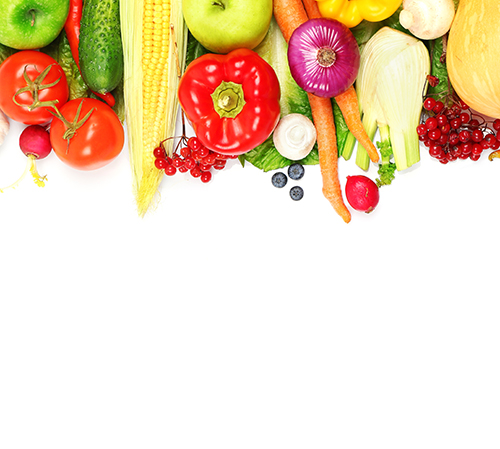Arm yourself against foodborne illness with these five food safety facts.
FACT 1
About one in six Americans will get sick from a foodborne disease every year.
The Centers for Disease Control and Prevention (CDC) estimates that 48 million people get sick annually in the U.S. from foodborne pathogens. While symptoms vary, common signs are diarrhea and/or vomiting. Other red flags include aching joints, abdominal cramps, fever, fatigue, and nausea. These symptoms can appear anywhere from hours up to a week after your exposure to contaminated food.
FACT 2
Certain populations are more prone to foodborne illnesses than others.
Food contamination can affect anyone, but those more vulnerable to falling ill and experiencing severe symptoms include:
- Children younger than age five
- People affected by autoimmune diseases, cancer, diabetes, or HIV/AIDS
- Older adults
- Pregnant women
FACT 3
Washing your hands can help protect you and others.
According to the CDC, many foodborne disease outbreaks are the result of people not washing their hands. Keep yourself and your loved ones safe by washing your hands before preparing or consuming food.
In addition to handwashing, you can also prevent the spread of germs by keeping your kitchen counters clean using hot, soapy water, regularly washing dishcloths, and allowing dishcloths to dry before reusing them.
FACT 4
Separating foods reduces your risk of cross-contamination.
- Starting in your grocery cart, eggs, poultry, seafood, and raw meat should be kept away from ready-to-eat foods. Be sure to place items in separate bags at checkout, as well.
- Store poultry, seafood, and raw meat in sealed containers in your fridge, and consider freezing the food if you do not plan on cooking it within a few days. Keep eggs in their original packaging in the main compartment of the refrigerator.
- While cooking, use separate plates, utensils, and cutting boards for poultry, seafood, and raw meat, and clean thoroughly before reusing. Throw out cutting boards once they become worn or develop grooves.
FACT 5
Your week-old leftovers could be festering with bacteria.
If you wait too long before consuming or properly storing prepared foods, being “sick of leftovers” may take on an entirely new meaning. The U.S. Department of Agriculture’s Food and Safety Inspection Service recommends storing leftovers in airtight packaging and placing them in the fridge or freezer immediately. Refrigerated leftovers should be tossed after three to four days, while frozen leftovers can last up to four months.
Do You Know Your Fridge?
Learn the layout of your fridge to keep food fresh and free from harmful bacteria.
Temperature—Keep your fridge’s thermometer set to 40°F or below. Foods requiring refrigeration can rest at room temperature for only two hours before you need to throw them out.
Freezer—The temperature of your freezer should be set at 0°F to prevent bacteria from growing.
Fruits and Vegetables—Sealed crisper drawers are ideal for fresh produce because they can help retain moisture.
Meat, Poultry, and Seafood—Store these foods in sealed containers in your meat drawer or on the bottom shelf of the fridge. Both options prevent meat juices from dripping onto other foods and are colder than other areas in your fridge.
Doors—Do not store perishable foods, such as eggs, in refrigerator doors, as the temperature will fluctuate.
Fridge Tips
- Check fridge weekly for expired foods.
- Clean fridge handles often.
- Reduce odors by placing a fresh box of baking soda in the back of the fridge every three months.
Safe Cooking Temperatures
Whether you are grilling burgers or baking chicken, make sure meat, poultry, and other prepared foods are cooked to a safe internal temperature. This requires a food thermometer. Reference the guide below detailing how long to wait before inspecting each food item and the minimum safe temperature required for consuming.
Food Temperature Rest Time
- Precooked ham
- 140°F
- Rest time: None
- Fresh pork or ham
- 145°F
- Rest time: 3 Minutes
- Fresh beef, veal, or lamb
- 145°F
- Rest time: 3 Minutes
- Fin Fish
- 145°F (or until opaque)
- Rest time: None
- Egg dishes
- 160°F
- Rest time: None
- Ground beef, pork, veal, or lamb
- 160°F
- Rest time: None
- Ground turkey or chicken
- 165°F
- Rest time: None
- Leftovers or casseroles
- 165°F
- Rest time: None
Poultry
- 165°F
- Rest time: None
Think you have food poisoning? If symptoms are severe or last more than two days or if you have a fever over 101°F, make an appointment with your primary care physician.







